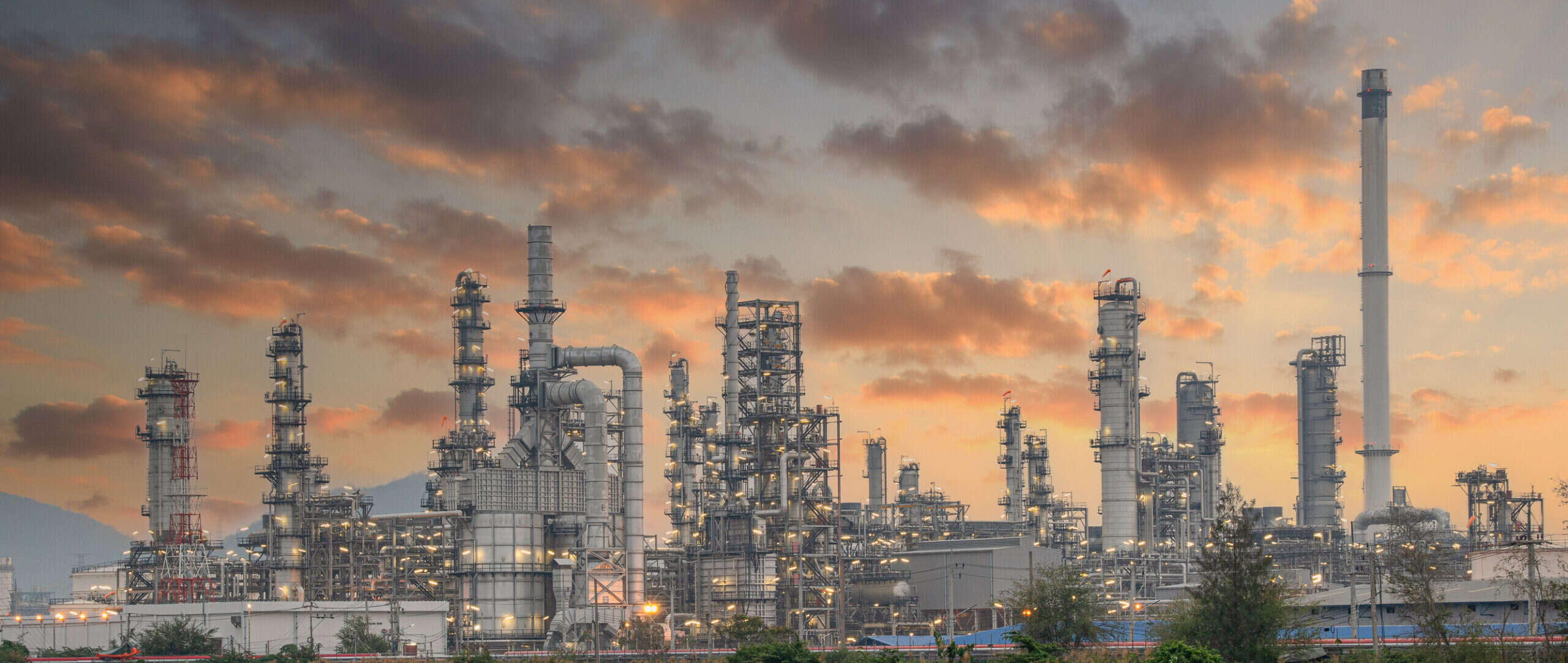
Given the scale of global greenhouse emissions and the intractability of fossil fuel use from industry performance, businesses within the oil and gas sector must collate and pinpoint exact areas for improvement, building a bridge between intention and action.
The oil and gas industry is responsible for approximately 10% of direct and 40% of indirect global greenhouse gas emissions, according to a report from McKinsey & Company. At COP26, more than 450 businesses from across the finance sector, collectively worth $130trn, committed to pledge funds to reach net-zero carbon emissions by 2050, putting increased pressure on the energy sector to improve performance, as investors increasingly seek to divest from fossil fuel assets.

The good news is that with developments in AI and machine learning technology, enterprises are increasingly able to generate a more granular picture of their incredibly complex emissions footprint. It is simply a matter of convincing businesses of the long-term benefits of adapting to more sustainable models and ensuring that emissions monitoring and abatement figure more highly on businesses’ agendas.
Companies in the exploration and production segment of the industry are using AI in multiple ways to lower their carbon footprint, from performing predictive monitoring of carbon emissions from a particular oilfield, to conducting analysis of the oil-producing potential of a given field, thus reducing the number of wells that need to be drilled; to optimizing the storage of CO₂, which can be used in the production of hard-to-get-at oil. Such enhanced oil recovery results in storing the CO₂ deep underground, rather than releasing it into the atmosphere.
According to Fouzia Boutobza, Microsoft’s energy & manufacturing industry lead for the Middle East and Africa, AI is already improving efficiencies within the oil and gas sector.
“What we’re seeing now is an immediate need to start monitoring and minimising emissions, with many of the big companies exploring approaches, technologies and solutions to achieving their Net Zero strategies,” she says. “And it’s come at a good time for industry, given how fast AI is evolving. We see, for example, a lot of requests from customers on how best to utilise machine learning to facilitate transformation for digital tools, to lower their emissions, or indeed to take that first step towards recording and reporting.”
Limitations of legacy systems
Up to now, Boutobza continues, the MEA oil and gas sector has the challenges accurately recording and measuring direct emissions in a timely manner due to multiple factors such as the limitations of legacy technology. Outdated infrastructure has not been conducive to the collection of accurate data, she says, which has had knock-on effects for the industry’s ability to modernise as a whole.
“In MEA, some of the systems in place are 20 or 30 years old,” she expalins. “This is why machine learning and AI has come to play such an integral part in improving oil and gas efficiencies, since the sheer amount of data held on these systems is so unwieldy, and bad values so widespread, that operators need these extra tools in their arsenal to extract value. New technologies such as live imaging, for example, when used in combination with AI, can extract data from old systems in the field, which in turn makes it much easier for operators to do their jobs.”
Another challenge is ensuring that emissions are measured and reduced across the supply chain and the three ‘scopes’ categorised by the Greenhouse Gas (GHG) Protocol: Scope 1, covering direct emissions from owned or controlled sources; Scope 2, accounting for indirect emissions from electricity, heating or cooling; and Scope 3, which includes all other indirect emissions which result from a company’s activity.
In the oil and gas industry, according to Boutobza , Scope 3 accounts for up to 75% of emissions, with businesses becoming increasingly anxious to define solutions to tackle them.
Measuring across the value chain
“We’ve even seen systems integrators trying to build their own solutions to tackle the problem,” she says. “What they don’t realise is that investments need to be made across the board, so that client and consultant capabilities can be modernised too.
“It’s only when the framework and infrastructure which govern the whole supply chain is modified that we start to see accurate reporting for the entire oil and gas suite; from businesses to downstream, and from suppliers to customers. The only way of modifying the infrastructure at scale, in other words, is to utilise sophisticated AI technologies that can spot gaps in the network.”

For oil and gas businesses starting out on their decarbonisation journey, Boutobza is emphatic that investing in technology, forging partnerships, and hiring qualified experts to maintain requisite AI systems is key. To do this, the oil and gas sector as a whole needs to demonstrate that it is an ally in the fight against climate change in order to attract new talent into the sector. This requires industry-wide participation, first of all – as has been seen in other verticals’ successful decarbonisation strategies – as well as collaboration with other sectors, including academia and government.
The good news, Boutobza says is that certain sectors within oil and gas are already deploying AI successfully and are experiencing tangible benefits in terms of optimisation. “We’ve already seen improvements on the production side of things. Companies are better prepared when it comes to well shutdowns, for example, since they can plan in advance.
“And then, taking it to the field level, companies can accurately measure the energy used in refineries, benchmark for shortages and cut costs, so that every position from production to output endpoints can be gauged. This process would have been almost impossible without accurate data, but now everything can be collated and accessed much more smoothly than ever before.”







